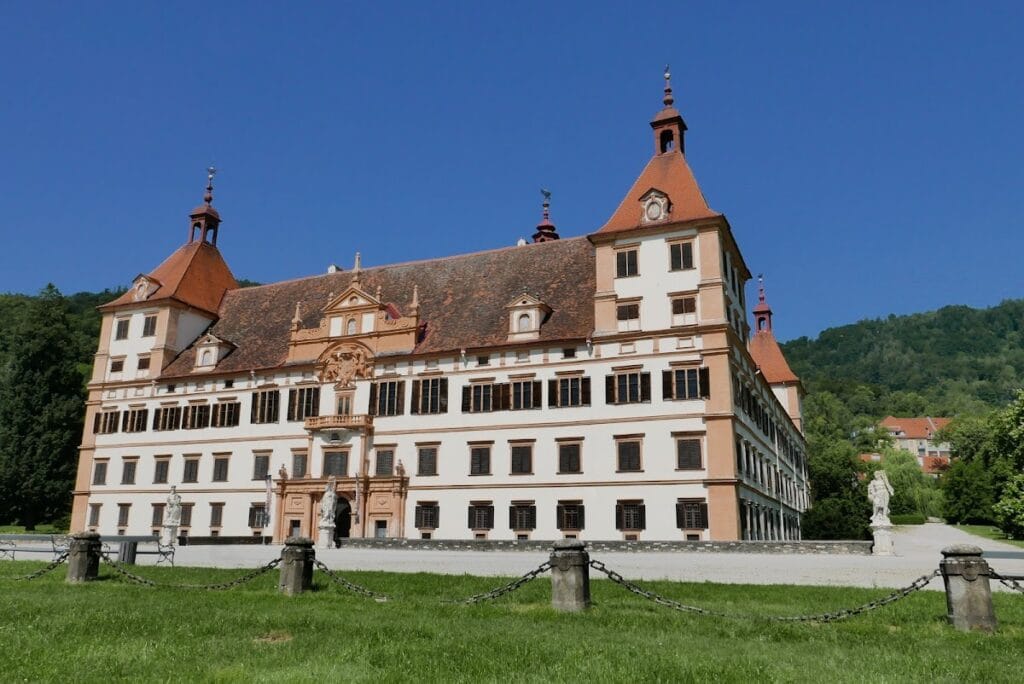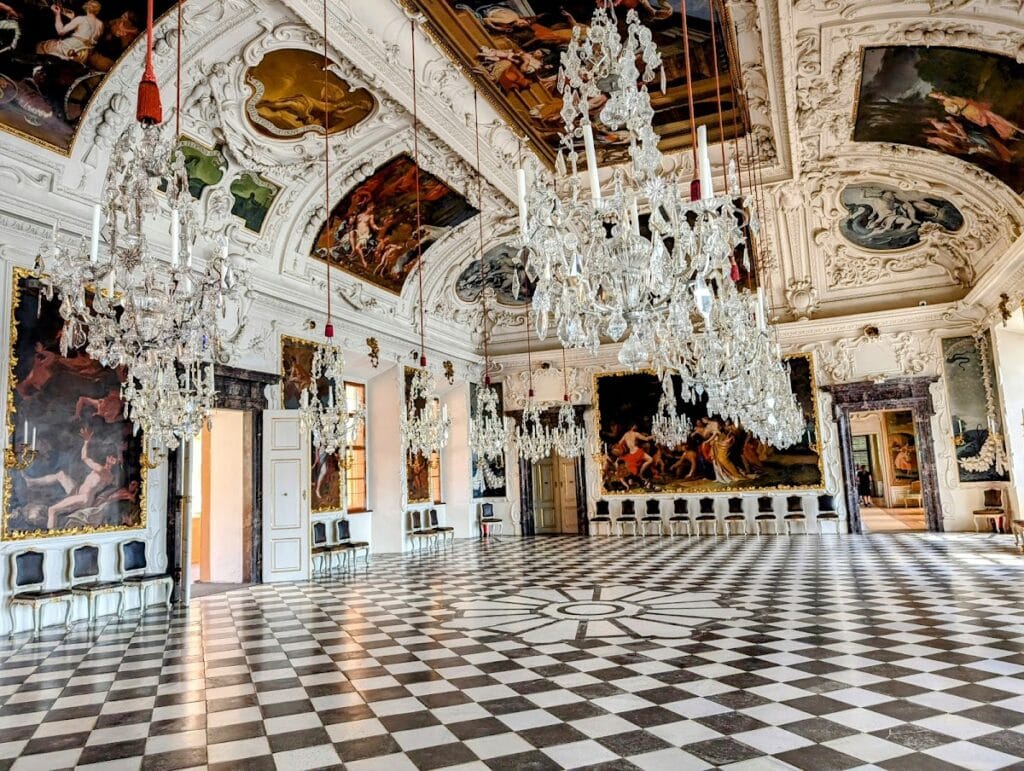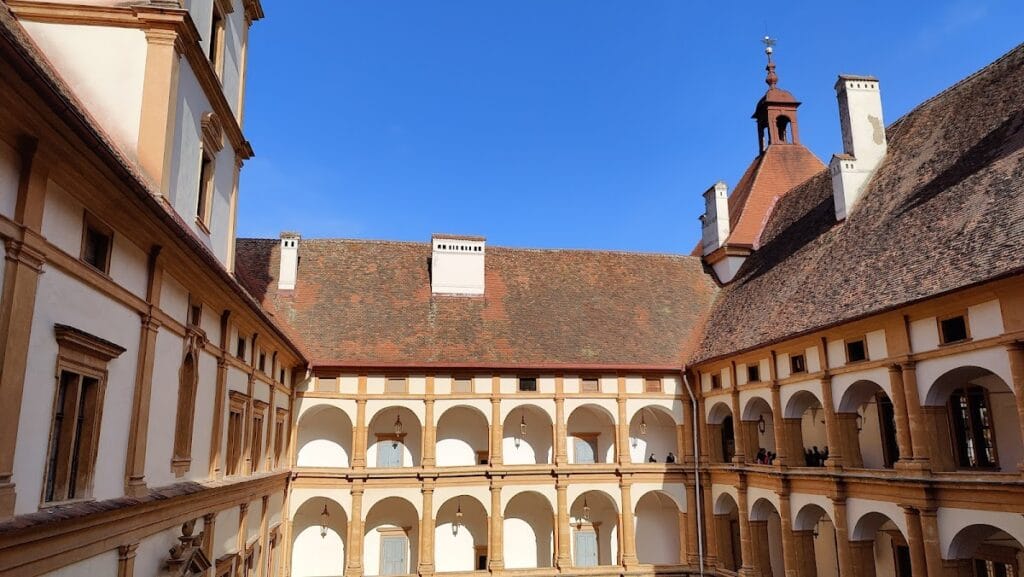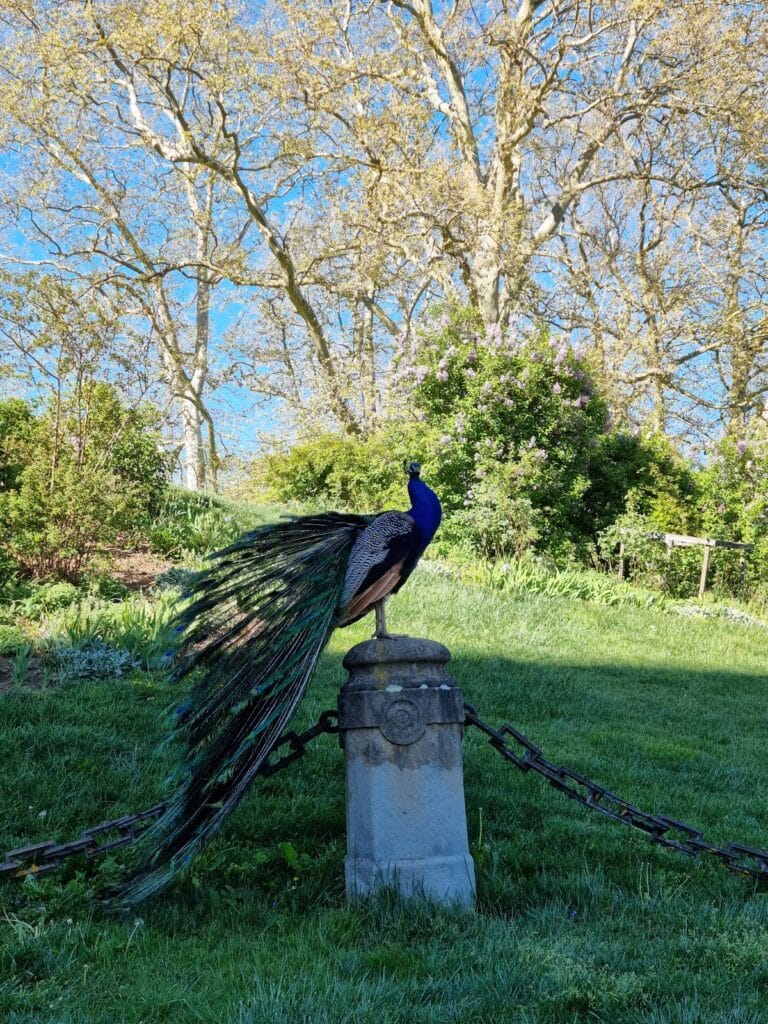Eggenberg Palace: A Baroque Heritage Site in Graz, Austria
Visitor Information
Google Rating: 4.6
Popularity: Medium
Google Maps: View on Google Maps
Official Website: www.museum-joanneum.at
Country: Austria
Civilization: Medieval European
Remains: Military
History
Eggenberg Palace is situated on the western edge of Graz, the capital of Styria province in Austria. Its origins trace back to the Late Middle Ages when the site was a fortified noble residence. Between 1460 and 1463, Balthasar Eggenberger, a wealthy merchant and nobleman, acquired the property. The medieval complex included a square Gothic chapel dedicated to the Virgin Mary, constructed before 1470. This chapel formed the core around which the later palace developed.
During the 16th century, the Eggenberg family expanded the residence to reflect their rising social status. These modifications adapted the medieval structure into a more comfortable noble home, setting the stage for future grander designs. The family’s increasing prominence in Styrian and imperial affairs influenced these changes.
In 1625, Prince Hans Ulrich von Eggenberg, a close advisor to Emperor Ferdinand II during the Thirty Years War, initiated a major transformation. He commissioned Giovanni Pietro de Pomis, the imperial court architect, to design a Baroque palace embodying cosmic order and rationality. Construction incorporated the medieval core and was largely completed by 1636, with decorative work continuing until 1646. The palace’s design symbolized the universe’s harmony, reflecting contemporary cosmological ideas.
From 1666, Johann Seyfried von Eggenberg enhanced the palace’s Baroque grandeur. By 1673, about 600 ceiling paintings adorned the main floor’s state rooms, illustrating mythology, history, and legend. Between 1684 and 1685, artist Hans Adam Weissenkircher completed the Planetary Room’s decoration, featuring celestial themes linked to the family’s identity.
After the male Eggenberg line ended, the palace declined somewhat until Johann Leopold Count Herberstein, married to the last Eggenberg princess, ordered a Rococo-style refurbishment from 1754 to 1762. This modernization updated interiors with silk wall coverings, new furniture, and faience stoves. Three East Asian cabinets were added, including a rare Japanese folding screen depicting Osaka before 1615. The palace theater was demolished and replaced by a Baroque church designed by Joseph Hueber.
The 19th century brought limited alterations. The formal Baroque garden was reshaped into a Romantic English landscape garden with winding paths and naturalistic features. The main representational floor remained largely unused during this time.
The palace stayed in the Herberstein family until 1939, when the state of Styria acquired it. After World War II, restoration efforts culminated in the palace’s public reopening in 1953. Since 2010, Eggenberg Palace and its gardens have been part of the UNESCO World Heritage listing for Graz Historic Centre.
In 2009, the Archaeology Museum opened on the palace grounds, displaying prehistoric finds including the Hallstatt-era Cult Wagon of Strettweg. The palace’s cosmic symbolism was commemorated in 2002 on a 10 euro silver coin featuring Johannes Kepler, who was a personal acquaintance of Prince Hans Ulrich and whose astronomical work influenced the palace’s design.
Remains
Eggenberg Palace is built on a rectangular plan centered around a tower containing the original Gothic chapel. Four corner towers rise above the main building, each aligned precisely with a cardinal direction. These towers symbolize the four seasons and elements, reflecting the palace’s cosmic theme.
The exterior features 365 windows, representing each day of the year. The piano nobile, or main floor, has 52 windows corresponding to the weeks of the year. This floor contains 24 state rooms arranged in a ring, symbolizing the 24 hours of a day, divided evenly between daytime and nighttime. Each floor has exactly 31 rooms, matching the maximum days in a month.
The ground floor housed service areas, while the first floor contained family living quarters and an audience hall above the main entrance. The piano nobile served as the representational and festive space.
The Planetary Room, the main festival hall on the piano nobile, features a vaulted ceiling with seven oil paintings of the classical planets. These paintings symbolize alchemical metals, days of the week, family possessions, and members. The ceiling corners depict the four elements, and the walls display twelve large zodiac paintings.
The 24 state rooms on the piano nobile are richly decorated with about 600 ceiling paintings illustrating human history, Greek and Roman mythology, Old Testament scenes, and Western European legends. These are framed by 17th-century stucco work.
Rococo refurbishments in the 18th century introduced silk damask wall coverings, new furniture, chandeliers, and faience stoves. Five northern rooms received large painted canvas wall coverings by Johann Anton Baptist Raunacher, depicting theatrical, hunting, gaming, and social scenes.
Three East Asian cabinets were integrated into the palace interiors. Two are decorated with Imari porcelain and Chinese silk paintings. The third contains eight panels of a rare Japanese folding screen (byłbu) showing the palace and fortified city of Osaka before 1615, providing a unique early modern visual record.
The palace gardens originally included a walled garden southeast of the building in the 17th century. This was expanded into a strictly subdivided Italian garden with parterres, bosquets, fountains, aviaries, and pheasant gardens. In the 18th century, the garden was transformed into a French Rococo style within the existing walls, preserving a pavilion and four large statues. It opened to the public in the 1770s.
In the early 19th century, the garden was redesigned as a Romantic English landscape garden with winding paths, artificial vistas, and the Rose Mound as a focal point. This design aimed to evoke the feeling of Arcadian landscape paintings.
The garden fell into neglect in the early 20th century, losing many original features and becoming a simple city park. Since 1993, restoration efforts have sought to preserve and reconstruct the garden as a Romantic cultural monument, including the 1848 Breakfast Garden and the Rose Mound.
The Planetary Garden, located in the northern corner of the grounds, was redesigned in 2000 by landscape architect Helga Tornquist. It incorporates the palace’s planetary symbolism into a modern flower garden. The Lapidarium, built on the former orangery’s foundations, houses a Roman stone collection.
Adjacent to the Lapidarium, the Archaeology Museum opened in 2009 as a subterranean structure displaying prehistoric and early historic artifacts.
The palace park is a protected European conservation area for the Greater Horseshoe Bat. Conservation measures are integrated into the garden’s management to protect this species.










